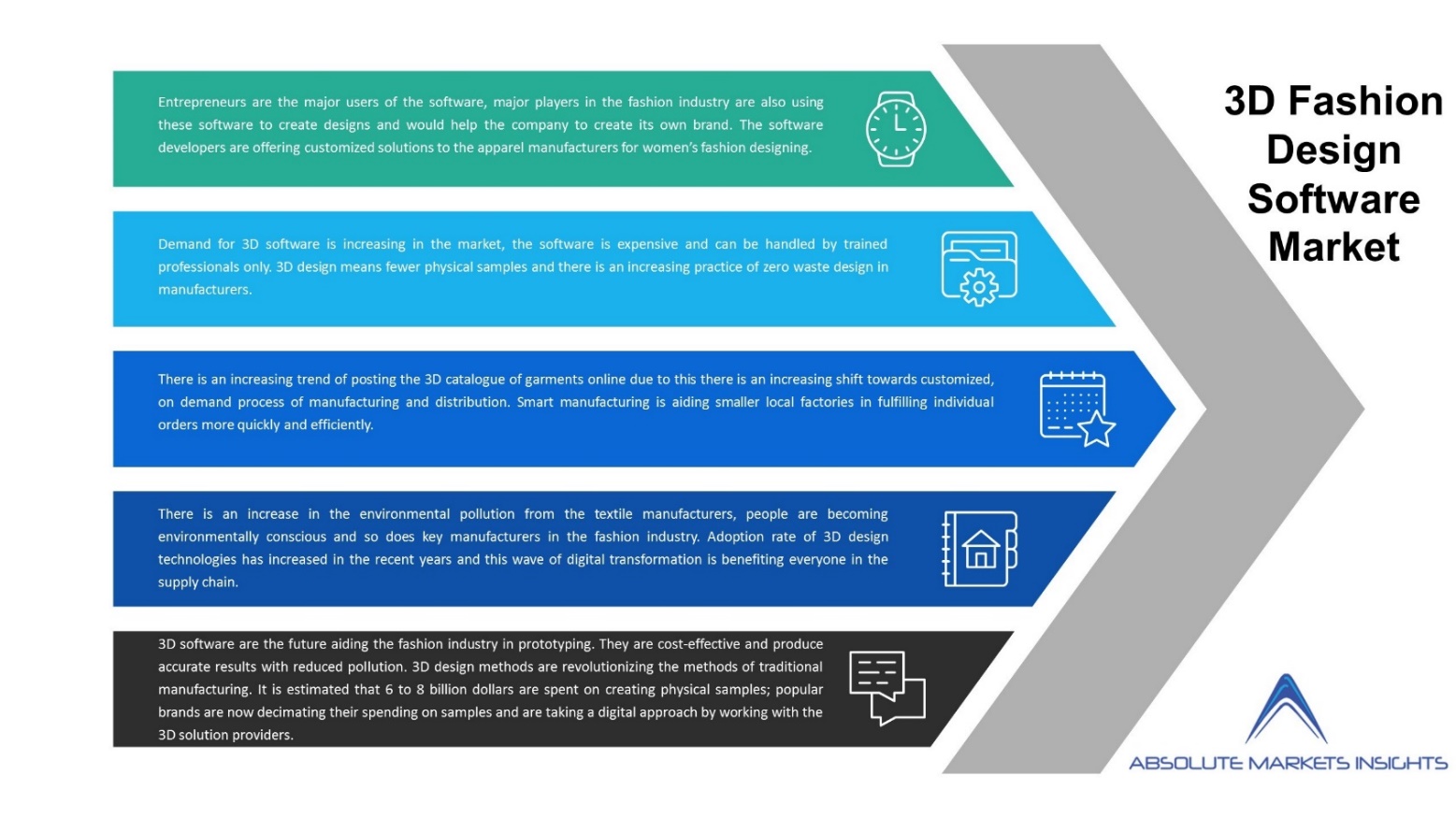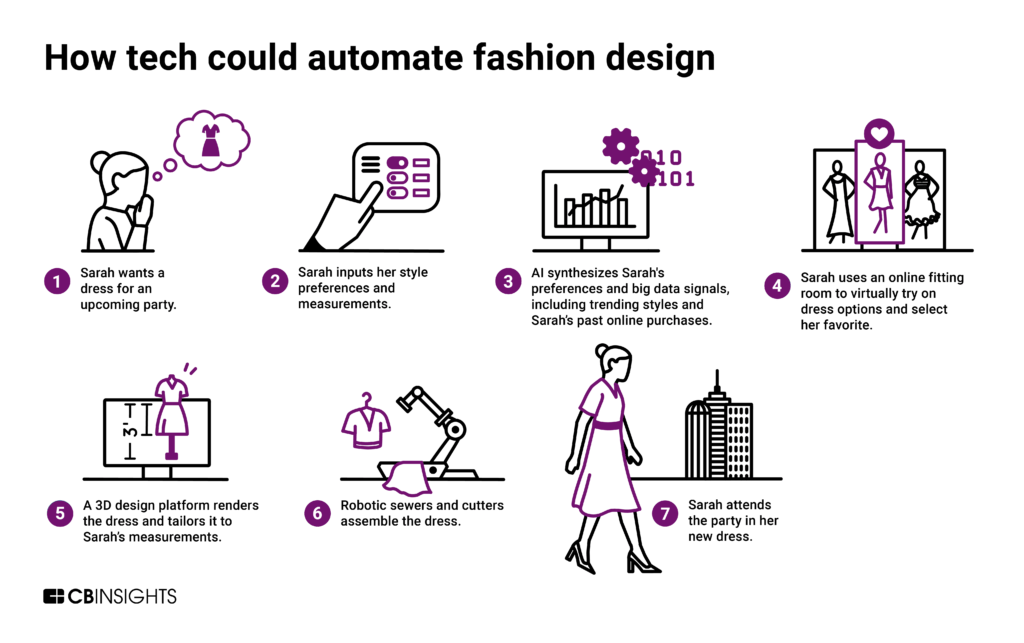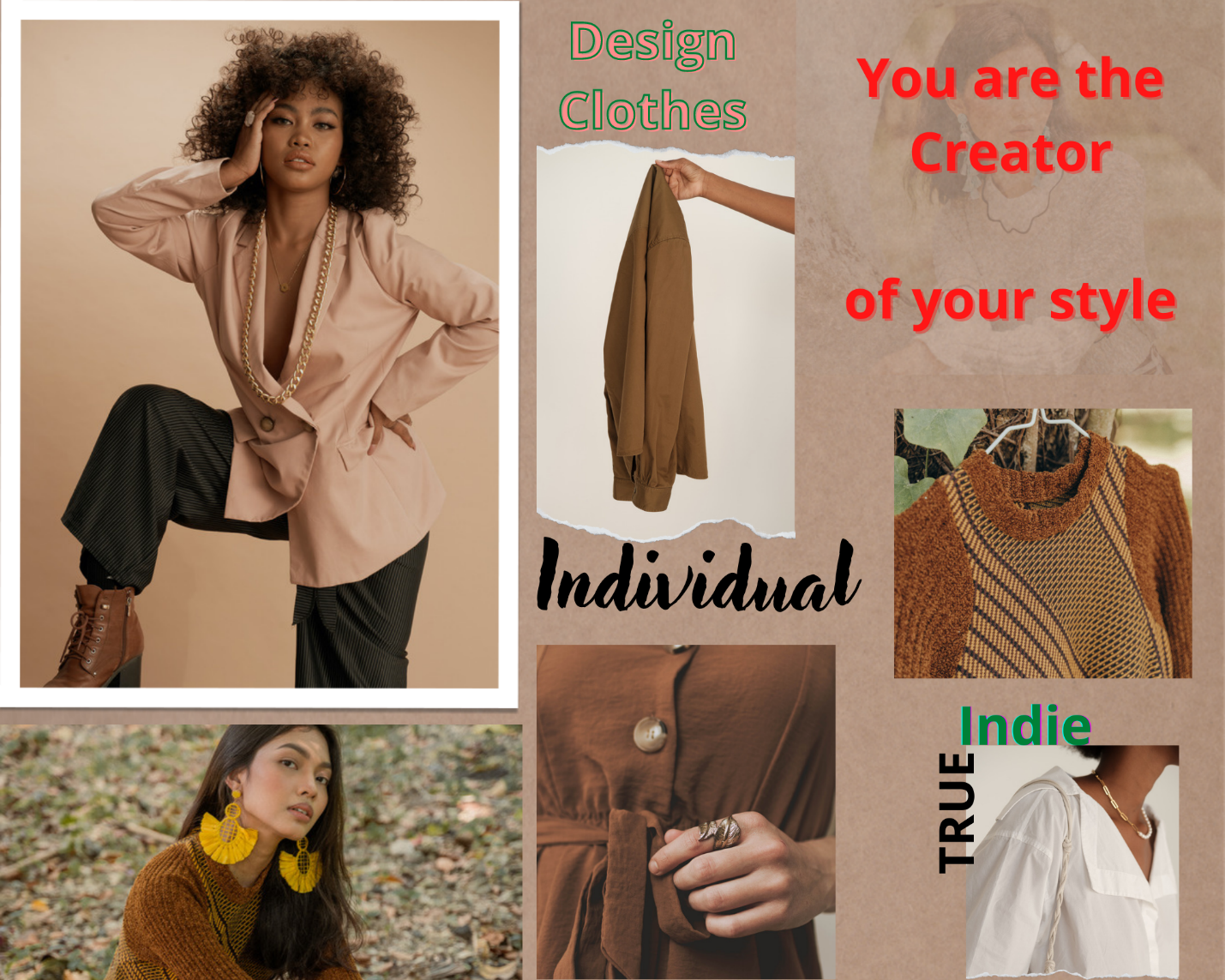Introduction
TrueIndie is a fashion application that enables everyone, including those unfamiliar with fashion design, to create a unique and truly individual piece of cloth. It has a game-like interface, very easy to understand and master, without extensive and complicated functions, such as those in CLO, a similar tool for fashion designers.
Fashion design involves the prototyping and sewing garments and other wearables, which are specifically designed for each person. The fashion project described here aims to provide each person the capability to obtain their own piece of cloth, unique and designed by themselves. It is called TrueIndie, which is for “true individual,” as the main idea of the application is that everyone should be able to create their own cloth design, which is suitable specifically for themselves.
Vision and Mission: Technologies in Fashion Design Accessible by Everyone
Various technologies are used in fashion design today; they enable the creation of garments quicker and better, ensuring that the desires of their future owners will be fulfilled. For example, augmented reality is widely used in design education, as it allows them to see their cloth projects in 3D and realize their intentions better (Boldt and Carvalho, 2018). Programming is used to analyze the garments, which improves their usability and helps fashion design education (Han, Wohn and Ahn, 2020). In combination with 3D printing, this method extends to the quick cloth production from materials comparable with 3D printers, based on those models (Kazlacheva et al., 2018). Generally, the usage of technologies and virtual prototyping improves problem-solving skills and facilitates more efficient and quicker fabrication (Baytar, 2017). Those are examples of technologies in fashion design; 3D modeling and prototyping is used for various purposes, and they are at the core of our project, called TrueIndie.
Our project uses 3D modeling to enable people to create their own clothes in the form of 3D models, which then will be used for actual cloth fabrication. Prototyping is used by fashion designers, as it lets them see their projects better (Elfeky and Elbyaly, 2018). TrueIndie is called so because it allows anyone to create a truly individual cloth design, even those unfamiliar with fashion 3D design. Its target audience is all people who value their individuality and are ready to express it by creating their own garments.

As one may conclude from Figure 1, the market of apps for garment design is growing, as more and more fashion designers use 3D modeling and other tools for their work. The advantages of using CAD applications for modeling in various manufacturing fields, including cloth sewing, are appreciated (Milinic Bogdanovic and Bogojevic, 2020). They help create prototypes choose colors, materials, and sewing styles, making the end product unique and much easier to produce (Arribas and Alfaro, 2018). However, the 3D technologies in the fashion field are evolving slowly, as they are often unfamiliar for people (Papahristou and Bilalis, 2017). Our app, in contrast, will be easy to use, accessible from various operating systems, free, and understandable for everyone who wants to design their own garment.
There are examples of projects similar to that described there; however, our business model differs from them. The idea of using computer modeling for facilitating cloth creation is not new, but there are no cheap products that are available for everyone in the format of the app and the browser extension (Barrera, 2021). One of them, CLO, provides a similar option: an app for 3D models creation; it has various functions, such as modular design, 3D-modelling, 2D-design, fabric choosing, and sewing pattern choosing. Some of them may be seen in Figure 2; TrueIndie will be different, as it will be designed for all people, rather than for fashion designers only.
The Application
TrueIndie is a fashion Android/iOS application, along with a website and browser extension, where people will be able to design their clothes. Then, they may order their designed clothes for an affordable price, which will be sent to them via post. All processes will be easy and quick: all clients may develop their favorite cloth by themselves for a low price, creating their dreamed image without issues. TrueIndie is aimed to promote the free choice and design of cloth by people: everybody wants to look like their want, but it is not always possible with ordinary cloth shops. It will be truly individual garments designed by each client separately using the easy interface suitable even for those unfamiliar with fashion design.

The interface will be intuitive, similar to those in The Sims game series. Everyone may quickly master it: there will be a panel with the list of clothes. One may combine those of them which are liked change colors and materials used. Depending on the materials, size, style of the cloth, the end price will be calculated exclusively for each client according to their tastes; the lowest will be as low as $100. Terms of cloth manufacturing are planned to be no more than several days. Compared with CLO, some features in Figure 2, TrueIndie will have fewer features, while they will be easier to use for people unfamiliar with 3D and fashion design. The app will have many cloth patterns, which may be combined in the desired way. They will be available for free; a customer should only pay once for the ready design, and its cost depends on its complexity.
The Main Idea
Ordinary cloth shops are a good thing, but they usually do not provide the opportunity to select the exact cloth of interest. One should be satisfied by only approximate clothes close to their dreamed image, but not the exact representation of this. It is a rare case when the chosen piece of cloth is precisely the one that was desired initially. There is an alternative: designed cloth, when one may describe or draw the garment which is aimed, and then fashion designers and sewers will create the desired coat, sweater, or T-shirt (Greder, Pei and Shin, 2020). However, it is quite expensive and, in addition, it is not always easy to describe precisely what one wants from the fashion designer to create. The application, on the contrary, allows one to develop clothes by themselves, in an easy 3D-modelling interface similar to those in games, albeit much more functional and universal.
After creating a basic 3D model by our client, it is sent to the sewing factory, where it is served as the exact model of the future piece of cloth. It is the outsourcing facility: our project is based only on modeling, delegating the actual cloth fabrication to the external facilities. TrueIndie makes the stage of intention and modeling available for everybody, allowing them to create their styles; those stages are shown in Figure 3 (CBInsights, 2021). Thus, the main idea of TrueIndie is the facilitation of the cloth design process and the introduction of the principle that everyone deserves to make their own cloth.
Possible Upgrades
Two primary lines of the upgrade for TrueIndie are connected with increased usability and adding various cloth elements available. Along with exclusively designed garments, it is possible to add the possibility to create jewelry and other wearables, which then will be sent to the appropriate production factory. The mainline of improvement is planned to be based on user stories and comments: the app’s main quality is its user-friendliness, and it should be developed first. Another one is adding new functions, which will enable our customers to create various wearables and expand the number of cloth assets available.
The marketing strategy for the application and site will be based on promoting it on the Internet via context advertising. Those interested in cloth buying will see our advertising and be invited to test the application. The full blog about the opportunities presented by the application will be established; the process of its development will be published there too. Partnerships with cloth shops and other fashion services also are viable options for promoting our project. In addition, it is planned to place publications about it in various online magazines which write about tech and fashion. Their list will be published in subsequent paragraphs; now, each option will be described more thoroughly.
Advertising
Advertising is essential in promoting goods and services: for this service, we plan the model of context advertising, which allows showing the promoting materials of TrueIndie on appropriate resources. It will be very bright and showing the various aspects of how users may apply their tastes in fashion to create the cloth for themselves (Hassan, 2021). A mood board in Figure 4 shows some examples of how our product is expected to feel. Another advertising line is content creation: the app website will have a blog where our team will create various posts, diagrams, and videos that will describe our product. Guest posts and user stories will be highly welcome, too, as the primary value for TrueIndie is user-friendliness.
Presentation
Along with direct ads and various articles, we plan to present TrueIndie online and offline at various conferences. There will be two main lines of presentation themes: descriptive, which will show the ideas and visions in the core of our project, and educational, helping our new and existing customers to use our app. Presentations that describe TrueIndie’s app and show its various functions will help teach how to use this free application. Those connected with its core idea will show TrueIndie’s values and how they are realized.

Partnership
The primary partnership type for our project is that with cloth factories: agreements with them are necessary to create the actual product, which then will be sent to customers. All designs created and finally approved by TrueIndie clients will be sent to those factories with which we will have agreements. In that way, TrueIndie needs to find good cloth factories and negotiate with them; those that use robotic sewers, as shown in Figure 3, are preferable for us.
While cloth shops may consider the application as their competitor and even rival, we are planning to cooperate with them. One possible cooperation model is the usage of our application for cloth selection by users. When our clients create their designs in TrueIndie, they may be sent to cloth shops, and then clients will buy the cloth from them; we will obtain some percent from this purchase.
Despite our tool being aimed at people unfamiliar with 3D design, the TrueIndie team is planning to cooperate with fashion designers. They will be invited to help develop the application, providing it by assets: models of pieces of cloth which then will be used by our clients to create their own garments. Our intent will be to show that TrueIndie is not the enemy of their work but give them new possibilities: they will make beautiful designs that people will use to realize their dreams in clothing.
Summary for Marketing Strategy
There are three primary ways of promotion for our fashion product: direct advertising, live or online presentations, and partnerships with other services. TrueIndie mood board in Figure 4 shows our future product’s ideas and general feelings. It is the sense of comfort connected with the possibility to become the creator of personal garments. Direct advertising will be essential to attract our target audience: people of various ages united by the idea of individuality. Presentations will describe our idea thoroughly and show how they are realized, while partnerships will help us actually realize them.

Conclusion
The application is aimed at fashion design, but its idea is to make it available for everyone. Thus, unlike competitors such as CLO, TrueIndie will have a simple interface, more similar to those of The Sims games rather than a serious 3D modeling tool. It will make it easily accessible for all our possible users, from all countries where the Internet, smartphones, and PCs are available. They will be able to design their own clothes, which will be best suited for them.
Reference List
Absolute Markets Insights (2020). Global 3d fashion design software market by current industry status, growth opportunities, top key players, and forecast till 2028. [online] Industry Global News 24.
Arribas, V. and Alfaro, J.A. (2018). 3D technology in fashion: from concept to consumer. Journal of Fashion Marketing and Management: An International Journal, 22(2), pp.240–251.
Barrera, T. (2021). What Is The Best 3D Clothing Design Software in 2021? 5 Amazing Options. [online] techfashionista.]
Baytar, F. (2017). Apparel CAD patternmaking with 3D simulations: impact of recurrent use of virtual prototypes on Students’ skill development. International Journal of Fashion Design, Technology and Education, 11(2), pp.187–195.
Boldt, R. and Carvalho, M. (2018). Virtual prototyping as an evaluation method for functional clothing.IOP Conference Series: Materials Science and Engineering, [online] 460, pp.012–040.
CBInsights (2021). The Future Of Fashion: From Design To Merchandising, How Tech Is Reshaping The Industry. [online] CB Insights Research.
CLO Official Site. (2021). CLO | 3D Fashion Design Software. [online] Web.
Elfeky, A.I.M. and Elbyaly, M.Y.H. (2018). Developing skills of fashion design by augmented reality technology in higher education. Interactive Learning Environments, pp.1–16.
Greder, K.C., Pei, J. and Shin, J. (2020). Design in 3D: a computational fashion design protocol. International Journal of Clothing Science and Technology, 32(4).
Han, A., Wohn, K. and Ahn, J. (2020). Towards new fashion design education: learning virtual prototyping using E-textiles. International Journal of Technology and Design Education.
Hassan, F.J. (2021). The relations of design and the role of it making the idea for fashion design. Al-Academy, (100).
Kazlacheva, Z., Stoykova, V., Georgieva, K. and Ilieva, J. (2018). Application of innovative technologies in fashion design education. NASA ADS, [online] 459(1), p.012080.
Milinic Bogdanovic, M. and Bogojevic, N. (2020). Advantages of Using New Technology in Textile and Fashion Design. Experimental and Computational Investigations in Engineering, pp.294–309.
Papahristou, E. and Bilalis, N. (2017). 3D Virtual Prototyping Traces New Avenues for Fashion Design and Product Development: A Qualitative Study. Journal of Textile Science & Engineering, 07(02).